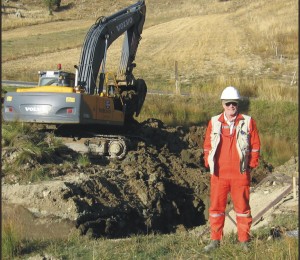
The results of a seismotectonic analysis of earthquakes along the eastern margin of the Sierra Nevada has led to the development of a kinematic model of deformation that was used to assess the seismic hazard to several dams in northern California. Active strike-slip and normal faults along the eastern margin of the Sierra Nevada primarily accommodate northwestward translation of the Sierra Nevada–Central Valley (i.e., Sierran) microplate with respect to stable North America. Strike-slip faults bordering the eastern Sierran microplate are subparallel to small circles about the Sierra Nevada–North American Euler pole. Normal faults of the Sierra Nevada frontal fault system strike 45° clockwise of the small circle trajectories and exhibit well-defined, left-stepping en echelon patterns, consistent with formation in a dextral transcurrent regime. Major graben bordering the northeastern Sierran microplate are located in regions where the locus of range front deformation steps abruptly eastward in a releasing geometry relative to Sierra Nevada–North American motion. Crustal shortening occurs at the northern end of the Sierran microplate, where a component of northwest dextral shear steps westward in a left restraining geometry across the Sierran crest to the Sacramento Valley. Kinematic inversions of earthquake focal mechanisms from the Walker Lane belt bordering the eastern Sierra Nevada indicate that seismogenic deformation primarily is characterized by horizontal shearing and oblique crustal thinning. Directions of macroscopic dextral shear inferred from the inversions are subparallel to the trajectories of small circles about the Sierra Nevada–North American Euler pole. Normal faulting along most of the eastern Sierran range front thus appears to primarily accommodate microplate translation rather than Sierran uplift or regional Basin and Range extension. This study was conducted by William Lettis and Associates and Lahontan GeoScience, Inc. and the results were published in Geology magazine in 2003 (Unruh, J., Humphrey, J. and Barron, A., Transtensional model for the Sierra Nevada frontal fault system, eastern California: Geology, v.31, p. 327-330).




